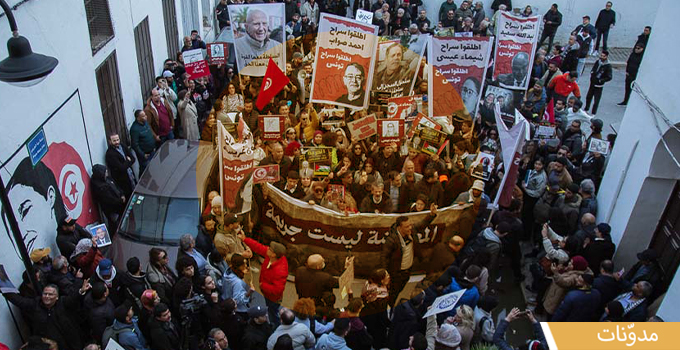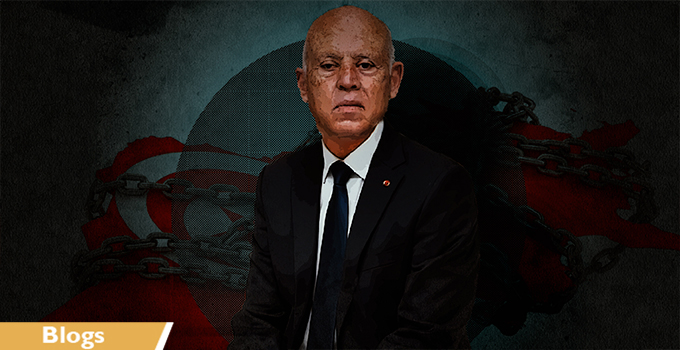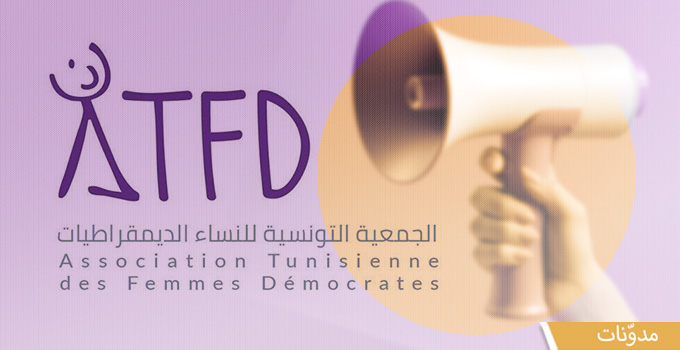
Fifty-four years later, the 2011 revolution sounded the death knell for the dictatorship, putting an end to the “republican” tyranny of Zine El Abidine Ben Ali and ushering in a Second Republic. It did this first by opposing attempts at reform, then by organizing constituent elections to grant the state new legal foundations. Yet has this Second Republic become democratic by integrating citizens without discrimination into the decision-making process?
Throughout the decade of 2010-2020, voices have regularly implored the republic to reconnect with the slogans of dignity and work which, in addition to liberty, gave birth to the 2011 revolution. Such was the appeals of social movements that continued to expand; the pleas by disadvantaged regions and working-class neighborhoods which sporadically emerged; up to the uprising of the youths in January 2021. The republic, discreet or even oblivious until then, was thus summoned to renew its message, to gather its forces, and to rethink its project.

A republic is not a magic formula for a way out of crises. It is an arena for constant conflict, and struggle against the forces that wish to see it sink, either through violence or by those who call themselves republican but wish to reconnect with the singular vision of the state that had prevailed since independence. These pseudo-republicans constantly proclaim “the salvation of the country,” claiming to save the republic without proposing any republican measures to rebuild society, integrate those who had been excluded, and protect those targeted by discrimination. The republic was born a social creature, and by denying itself, it dies.
The word “republic” must ring true and correspond to the realization of dignity, freedom, justice, and order, as well as equality, so as not to become exclusive while affecting the lives of people without rights.
This is the meaning of our collective work Long live the Republic! Tunisia 1957-2017, which aimed at “talking about her and making her talk.”
Of the Republic and its Symbols
To speak of the republic is to revisit the major events and facts that paved the way for its emergence, and to describe the course it has taken since its proclamation.
The inexorable decline of the beylik monarchy, despite reforms undertaken during the nahda, then the colonial shock which introduced a forced march of “modernity” for the benefit of the occupier, were at the genesis of the resistance which manifested, on the one hand, in an intellectual and literary movement of the Tunisian elite, and on the other hand in the mobilization of a national movement and active trade unionism which acted in concert with the patriotic beys.
In many contemporary accounts, the circumstances surrounding the proclamation of the republic in 1957 resemble an “unexpected” overthrow of the bey with the consent of the majority of the population. Viewed as largely in bed with the colonists, the last bey Lamine Bey gave the Tunisian people a reason to abandon him after accepting the throne and the dismissal of Moncef Bey by the colonial authority.
The First Republic laid the foundations of the new independent state, adopting laws—at the instigation of Bourguiba—that assumed the direction of modernization: reforms in regional administration, including the abolition of former provinces and the formation of governorates and municipalities; the abolition of religious endownments and its transfer to the public domain; the Tunisification of the security services; the adoption of personal status codes; the provision of free education to all; and the creation of the first nucleus of a national army. All of these had been decrees ratified by the Bey prior to his dismissal.
Republic of the Monarch
“I know how much affection [the Tunisian people] have for me. Some thought I could take charge of their destinies, but I have such respect for the people that I do not wish for them a master, and the only choice I can offer them is the choice of the republic.” Habib Bourguiba, speaking to the Constituent Assembly on 25 July, 1957.
The Republic thus emerged with the motto Liberty, Order, Justice, and the national anthem continued to be sung from the hearts of generations of Tunisians. These slogans were reinforced by the adoption of the 1959 Constitution, Article 1 of which stipulates, “Tunisia is a free, independent, and sovereign state. Its religion is Islam, its language is Arabic, and its type of government is the Republic.” It undertook immense projects, the effects of which remain palpable to this day, including the secularization of the state and social institutions; the development of public services; free public education for all; and healthcare and family planning for all. Once national sovereignty was regained with the blockade of Bizerte and the evacuation of French troops, Tunisia engaged in diplomacy, granting the country influence that went well beyond its economic or demographic means.
The thirty years that followed transformed the country, and society changed fundamentally. However, the democratic promise would not be kept. From the outset, the republic deviated from its founding principles, placing a monarch at its helm—Bourguiba as president for life—and placing Order before Liberty or Justice. The country thus became a single-party state (the Socialist Destourian Party), bringing the opposition to heel using crackdowns, repression, arrests, show trials, and torture.

The end of the “republican monarch’s” reign was marked by intrigue and clan conflicts within the circles of power, against a backdrop of confrontation with Islamists (the Movement of Islamic Tendency; the predecessor of Ennahda). This enabled the intelligence general Ben Ali to organize a coup d’état on 7 November, 1987, which removed Bourguiba on the grounds of his “senility and worsening state of health,” invoking “the national duty to declare [Bourguiba’s] inability to assume the responsibilities of the Presidency of the Republic,” which, by virtue of Article 57 of the 1959 Constitution, were incumbent upon him as well as “the supreme command of our armed forces.”
A Republic Distorted
Adopting almost verbatim Bourguiba’s statement before the Constituent Assembly about the “responsibility and maturity” attained by the Tunisian people, the declaration of 7 November, 1987, affirmed that, “All its elements and components are such that they make a constructive contribution to the management of its affairs in accordance with the republican idea, which grants institutions their full capacity and guarantees the conditions of a responsible democracy, as well as respect for national sovereignty as enshrined in the Constitution.”
At the time, the majority of citizens believed in real change and the prospect of democratization in the country, making the 7 November declaration a quasi-preamble to the Constitution. “In the times in which we live it is no longer enough to put up either with presidents-for-life or with automatic succession for the head of state, under a system from which the people are excluded. Our people deserve a modern, institutionalized politics, based on a genuine multi-party system incorporating a plurality of mass organizations.” (Extract). Hope then appeared to have been reborn. However, once at the helm, Ben Ali strove to apply the law arbitrarily through constitutional amendments. He abolished automatic succession in favor of the prime minister (a pitfall through which he eventually slipped); denied the latter jurisdiction to “dispose of administration and public order;” and modified Article 63 such that, in the event of the adoption of a hypothetical and unimaginable motion of censure by the chamber, the president, even if disavowed, would not be forced to resign (Constitutional Law No. 88-88 of 25 July, 1988).
The last revision in 1997 (Constitutional Law No. 97-65) established a caudillo regime (one leader, one people). In a highly suspect and ambiguous manner, it broadened the referendum powers, granting himself the sole power of initiative, which he soon acted upon four years later. 26 May, 2002, the day of the plebiscite, sounded the final death knell of the Republic, in an assault on justice whereby Tunisia’s foremost citizen, the president, buttressed himself against any checks or controls, and against any popular or judicial sanctions—for eternity.
Ben Ali ruled unchallenged from November 1987 to January 2011, relying on a sprawling police apparatus to eliminate all of his political opponents. In the wake of the crackdown against the Islamist movement in the early 1990s, the whole of society was subjected to heavy-handed police methods in order to eliminate any potential for dissent, systematically using torture to extract confessions and condemn the accused by court orders, with reckless disregard for the suffering of victims and their families. Classic methods of repression, practiced in broad daylight, were added to those committed in the shadows, and extended to the economic sphere. The republic was reduced to a pyramid system, ruled by a president relying on relatives, who practiced an omerta-like code of silence; most often united by ties of kinship and/or allegiance; as well as a new class of technocrats.
The climate which accompanied the authoritarian drift removed politics from everyday life, public life, and the media. Everything proceeded as though politics were the sole purview of the president.
The authoritarian police regime, reliant on its two levers of despotism and nepotism, distorted the republic for 22 years. Previously, during Bourguiba’s reign, the republic had been mishandled several times, and experienced misfortunes. It could have been based on a constitution preserving the spirit of the founders, propelling Tunisia into political modernity. This did not happen, and “Ben-Alism”was the price paid for the tragic choices of the First Republic. As for Ben Ali himself, and his family and cohorts, they engaged in rampant and widespread corruption, and it was impossible for a single moment to envisage a transfer of power that was peaceful or negotiated.
The Revolution, or Hope for a New Republic
The highly symbolic gesture made by 26-year-old street vendor Mohamed Bouazizi sounded the demise of this republic of fear. By self-immolating on 17 December, 2010, following an altercation with a municipal police official, Bouazizi set off a cycle of insurrection which spread rapidly across the country from the town of Sidi Bouzid. All of Tunisia’s vibrant forces (youths, women, lawyers, trade unionists, students, etc.) mobilized to demand the departure of the dictator. 319 martyrs fell victim to the bullets of the security forces, and the 3,729 wounded bear on their bodies the scars of a falling dictatorship’s infamy. They were the martyrs and the wounded of the revolution, but they were also those forgotten by the republic.
The nation charted a path to regenerate the republic; a path paved of struggles and sacrifices. Fearing the revolution was being hijacked by the announcement on 14 January, 2011, of a government primarily comprising former leaders of the party in power since 1956 (the Democratic Constitutional Rally), young people from all over the country marched on Tunis to achieve the largest occupation of public space in Tunisia’s history (Kasbah 1 and 2), forcing Prime Minister Mohamed Ghannouchi first to reshuffle the government and then, on 27 February, to resign. Instead of an evolution from above, based on a revision of the constitutional provisions of 1959, or a constitutional overhaul in isolation, the street imposed a different path “from below;” that of the election of a constituent body, which is to say the redefinition of the foundations of the republic.

A provisional period was initiated to follow up on the suspension of the 1959 constitution and all related institutions, with the exception of the justice system. FouedMbazzaa, the interim president, appointed BejiCaïd Essebsi to head a provisional government in order to manage day-to-day affairs by decree until elections could be held. He also negotiated with civil society actors and opposition parties the establishment of a body referred to as the Higher Authority for Realization of the Objectives of the Revolution, Political Reform, and Democratic Transition. This was an impromptu parliament of sorts, bringing together representatives of civil society, trade associations, opposition parties, and the interior regions. It was tasked with creating conditions conducive to the holding of elections. Several decree-laws were then drawn up by the Higher Authority, adopted by the government, and ratified by the president, including an electoral law, a law on electoral authority, and laws relating to associations and parties. For its part, the provisional government adopted a series of measures liberalizing public life, whereby authorizations were granted to hundreds of associations, new political parties, media outlets, and so on, lifting the sanctions put in place by the dictatorship with regard to several international conventions on human rights and combating impunity. A general amnesty was also decreed.
Breathing Life into the Republic
The year 2011 marked the first free and fair democratic elections in the country’s history; those of the National Constituent Assembly, which, with its 217 members, convened until January 2014. It granted its confidence to three governments, and would eventually, after much grief and pain, submit its copy of the constitution on 26 January, 2014. In the meantime, a climate of fear, as well as violence both psychological and physical, would settle in, and become tolerated by a majority in power, in a manner favorable to the emergence of Islamist terrorism. The republic would remain in peril as its institutions, military, and internal security forces became the targets of attacks. The population lived in fear while trade union officials, political figures, intellectuals, journalists, and associations faced death threats and lived under police protection. ChokriBelaïd and Mohamed Brahmi were assassinated.

Resistance by society was organized in large part thanks to the mobilization of women, culminating in the “Errahil au Bardo” sit-in, which called for the dissolution of the Constituent Assembly and the resignation of the government. A showdown then began, the outcome of which was national dialogue under the aegis of a quartet of organizations that subsequently received the Nobel Peace Prize: The Tunisian General Labour Union (UGTT); the Tunisian Confederation of Industry, Trade, and Handicrafts (UTICA); the Tunisian Human Rights League (LTDH); and the Tunisian Order of Lawyers. With the constitution adopted and the republic seemingly secured, a new electoral cycle was launched aimed at establishing legitimate institutions: legislative elections for the Assembly of People’s Representatives; presidential elections in 2014 and 2019; and municipal elections in 2018.
This electoral process is still ongoing, but the callousness of political actors and the inability of partisan groups to set up strong and lasting institutions with checks and balances constituted a missed opportunity. The Republic of Tunisia in 2021 resembles an aimless boat sailing through dense fog.
Seven years after the adoption of the constitution, the course of events remains concerning, and the political and social aspirations brought forth by the 2011 revolution have been shattered, with the revolutionary political project threatened with oblivion.
To breathe life into the republic is to emphasize the civic substance of love of one’s country. It means congregating around a collective story without being trapped in nostalgia for the founding fathers(s). Above all, it concerns people’s lives in the here and now: young people, women, unemployed graduates, minorities, and entire regions; those who lit the flame and gave martyrs; those who continue to revolt because they feel increasingly marginalized and excluded from the republic. Beyond the incantation of procedural democracy and electoral cycles, it is necessary to create a common republican imagination that carries forward the great political and social aspirations of the revolution.
“The sovereign, democratic, and social Republic, able to carve out its place in the world and act within the space of its various affiliations: in the Maghreb, in Africa, in the Mediterranean, in the Arab-Muslim world… This Republic is not a utopia. It is within our reach. If we are to become aware of it, and if we are to wish it with regard to the state’s respect for citizens, each and every one must do their work.” It is with these hopeful phrases that the book Long Live the Republic! Tunisia 1957-2017 begins.




iThere are no comments
Add yours